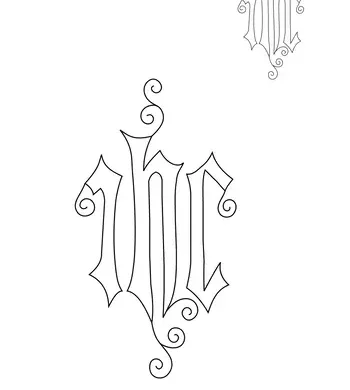
This vintage Ecclesiastical Hand Embroidery Design, originating from a Boston monastery over 100 years ago, still bears the pounce powder from its original use. The intricately perforated design on thin tracing vellum paper is tiny—merely 2 to 3 inches in size. The IHC hand embroidery is elegantly simple and clean, sparking ideas for stitching options. Considerations include a trailing stitch for the outline with a seed stitch filling or even a straightforward split stitch outline.
Like this:
Like Loading...
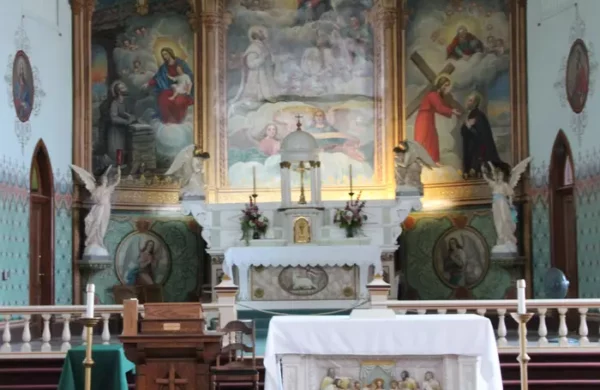
St. Ignatius Mission. The Mission is in the tiny town of St. Ignatius, MT, at the southern edge of Flathead Lake, and about forty miles north of Missoula. This is one of those remote churches that have been on the “Must See” list. With a trip to Glacier Park, it was the perfect time to visit.
Like this:
Like Loading...
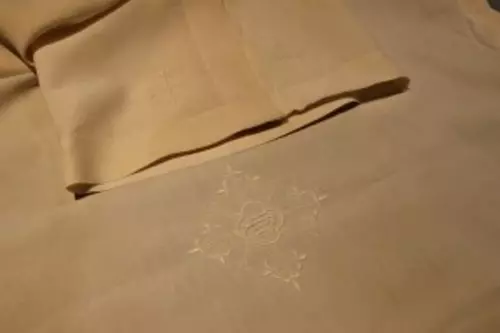
This antique Fair Linen, while stained, and scorched, with holes from a too-hot iron on one end, features a lovely hand-embroidered IHC motif in the center of the Altar Linen, surrounded by four smaller cross designs for the corners. Worked completely in white threads, the Ecclesiastical Embroidery is still lovely amid the linen stains of age. The central hand embroidery design is relatively small, considering the Fair Linen is wide and long
Like this:
Like Loading...

Baptismal Towels or Baptismal Napkins may be as simple or elaborate as one desires to make them. The size of this Baptismal Cloth is approximately 19″ x 21″ as the finished size. The embroidery may be a very simple hand-embroidered cross. The hems should be narrow. Now, there may be more specific instructions available in some older Church Vestment Books
Like this:
Like Loading...
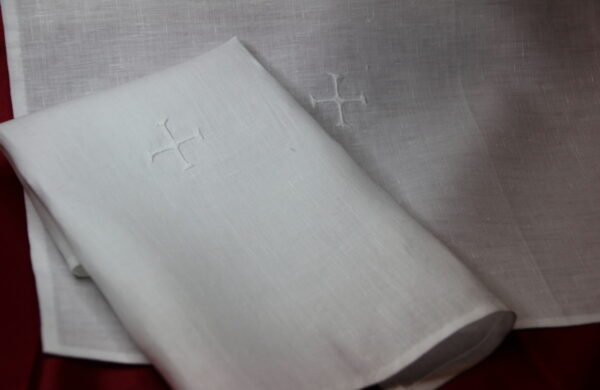
The altar linen project for King Richard III was spearheaded by Elizabeth Morgan who was contacted by Leicester Cathedral and coordinated the making of Fairlinens: palls, purificators, lavabo, corporals, and other linen items as needed for a new altar being installed in Leicester Cathedral for the service.
Like this:
Like Loading...
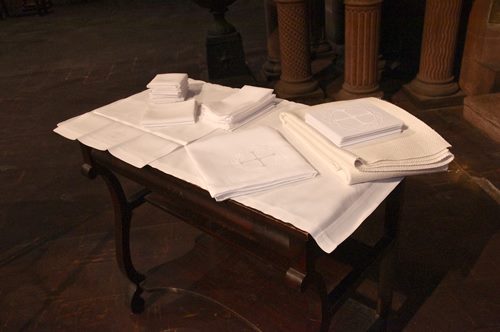
Making altar linens for the King of England – a very special project, coordinated by Elizabeth Morgan. Ecclesiastical Sewing small role in a historic event
Like this:
Like Loading...

Merge three vintage Ecclesiastical Embroidery Designs into a versatile artwork. The simple lines make it ideal for whitework, but it seamlessly transitions for gold and silk Ecclesiastical Embroidery. For whitework, consider stitches like stem stitch, outline stitch, and padded satin stitch for letters. Alternatively, use outline stitch with seed stitch fill. Chainstitch is another excellent choice for whitework in Ecclesiastical Embroidery.
Like this:
Like Loading...
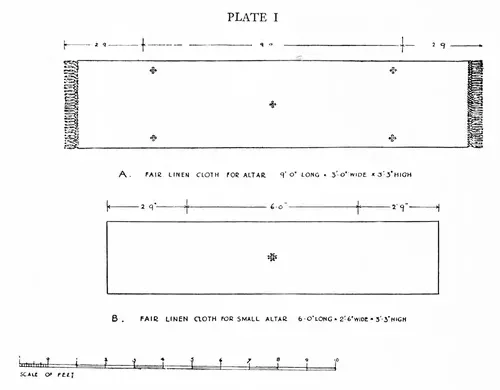
Fair linens, the top linen placed on the altar, are crucial liturgical items. According to Percy Dearmer, a renowned liturgical furnishing author, fair linens should be the exact width of the altar and extend within six inches from the ground on the sides. The linen should be good quality, hemmed, and bear one, four, or five devices in white, red, or blue. Modern recommendations suggest the fair linen’s length should match the superfrontal’s, often 9 to 12 inches. Working with 100% linen, mitering corners, and adding crosses can create a durable, elegant fair linen for the altar.
Like this:
Like Loading...
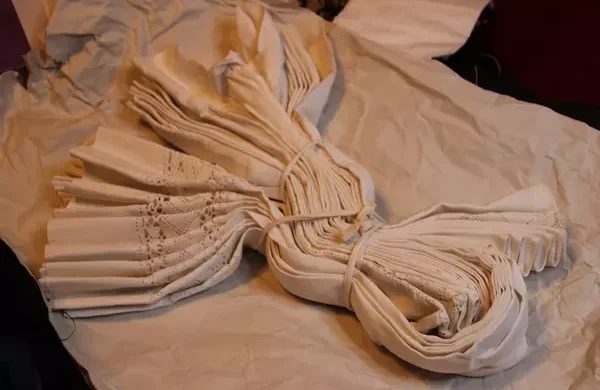
I’ll give you a hint: it is a linen fabric, and it is old. Any guesses as to what it might be?
Like this:
Like Loading...
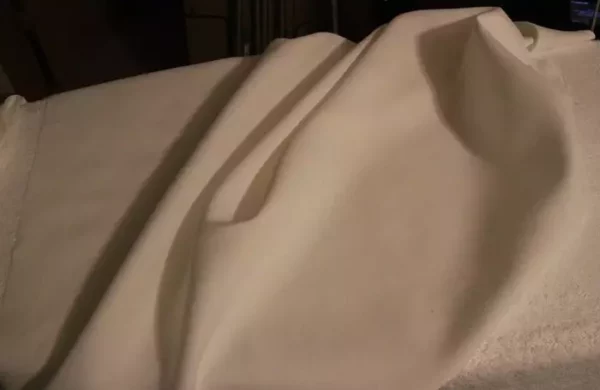
Cleaning and ironing linen, though often disliked, proved essential for ecclesiastical projects. Preshrinking Alba Maxima, Ecclesiastical Linen, and Linen Cambric involved a careful process of soaking, rinsing, and pressing. Despite the effort, working with well-prepared linen, particularly Ecclesiastical Linen, was satisfying and crucial for successful embroidery.
Like this:
Like Loading...

“To the Rescue in the Sacristy”: Addressing the mystery of disappearing Purificators in the Sacristy after Holy Communion services, showcasing the need for solutions to ensure linens find their way back to their rightful place.
Like this:
Like Loading...

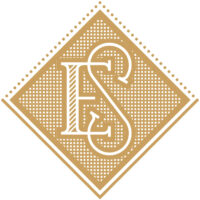










You must be logged in to post a comment.